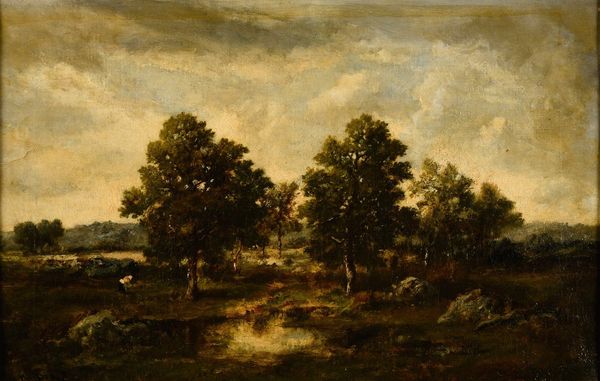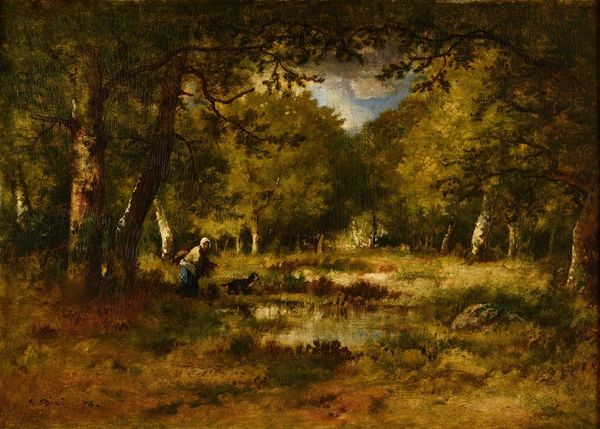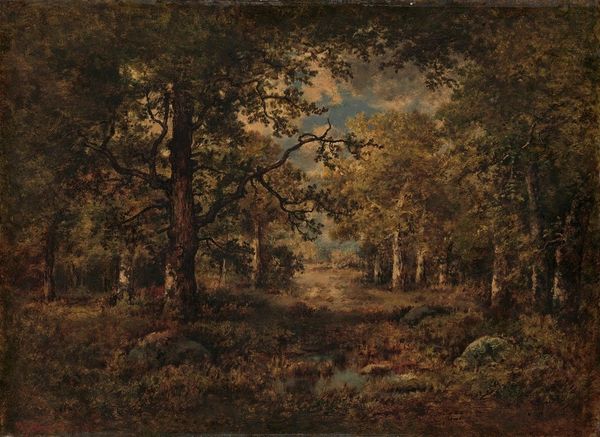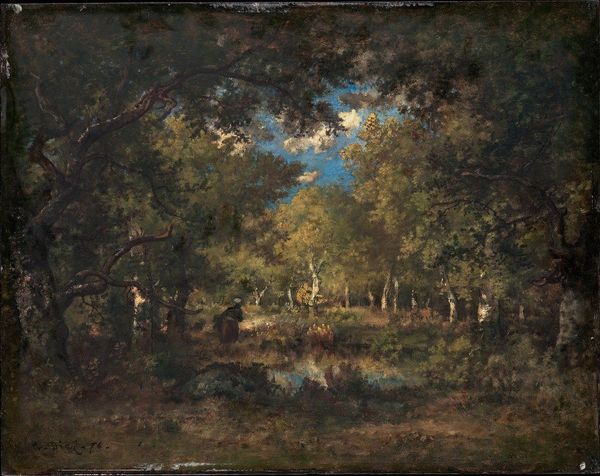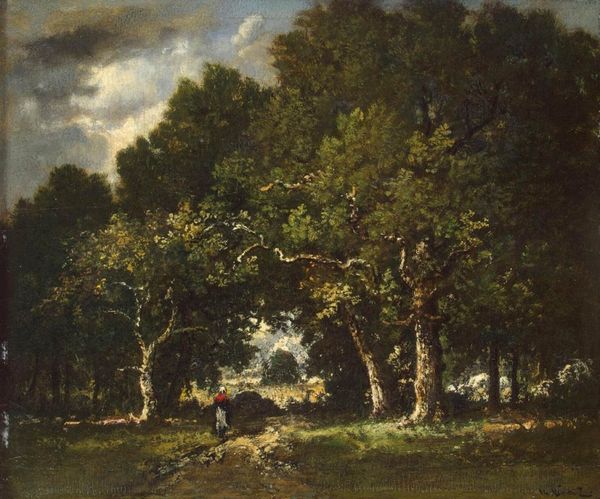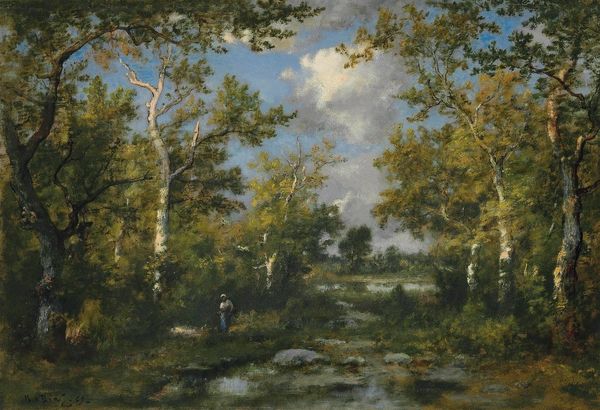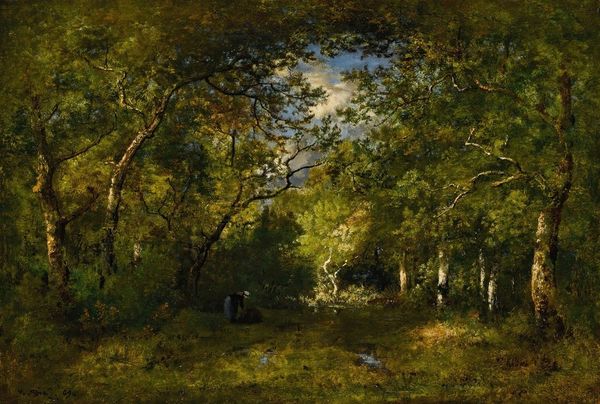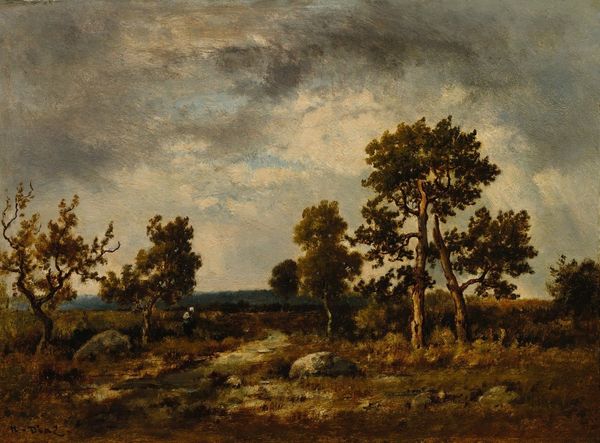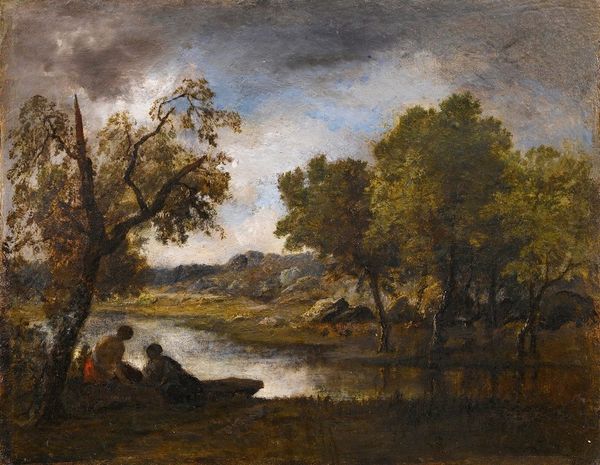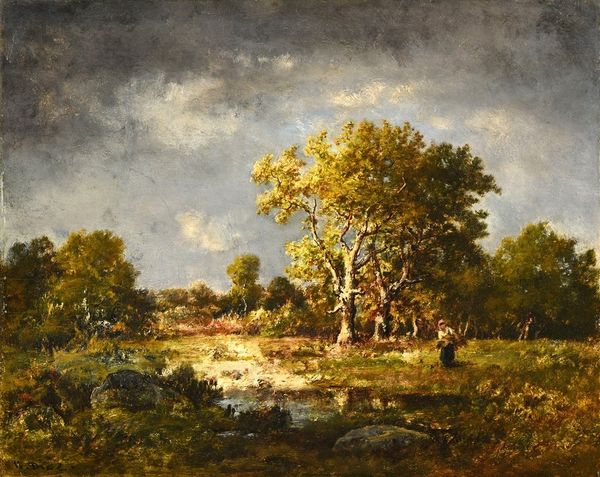
Copyright: Public Domain: Artvee
Editor: So, this is Narcisse Virgilio Diaz’s "Zone Peu Boisée, Rochers Et Fagotière," created in 1863 using oil paint. It immediately strikes me as both idyllic and slightly melancholic; the dark woods contrasting with a brighter clearing in the background. What stands out to you about this piece? Curator: Well, placing it in its historical context, we can understand it as part of the Barbizon school's embrace of 'plein-air' painting. The shift away from the Salon towards directly engaging with the landscape mirrors a larger socio-political interest in representing the lives and landscapes of rural France, a subject largely ignored within the elite circles of Parisian art at the time. How does seeing the working figures change your reading? Editor: I hadn't thought about it that way. Knowing they are not just decorative elements gives the landscape a certain social dimension that I missed. I had just registered them as forms. Curator: Exactly. The placement of women performing labor amidst nature emphasizes their integration with the landscape, contrasting it with the increasing industrialization during the period. It challenges the classical hierarchies of genre-painting, which historically gave precedence to noble figures within defined architecture instead of everyday activities in 'raw nature.' Does this added knowledge deepen the Romantic style associations? Editor: It does. It moves past a simple appreciation of natural beauty to an observation about socio-economic place. Also, knowing that "plein-air" technique sought direct realism and emotion gives even greater importance to the lives depicted, no matter how mundane or simple the activity may seem. Curator: Absolutely. Diaz's painting becomes less a sentimental representation of rural life and more a visual assertion of its value and significance. Considering how paintings of this genre and style have been exhibited and collected tells us how tastes evolved, too. Editor: I’ve definitely got a new appreciation for how historical context can shift the entire perspective of a work, and now I see far more layers. Thanks! Curator: Likewise. Looking closely and seeing through that historical lens allows for a fuller engagement with art and how social meanings shape it.
Comments
No comments
Be the first to comment and join the conversation on the ultimate creative platform.
